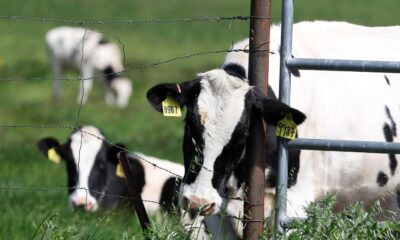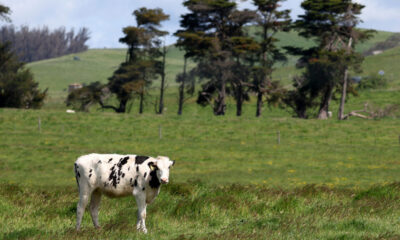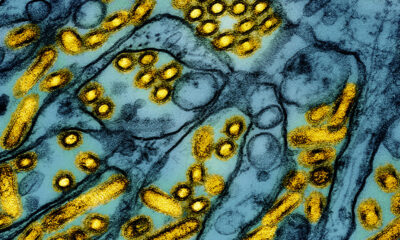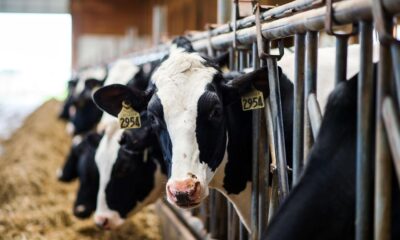Health
Questions and answers about ramping up H5N1 bird flu vaccine
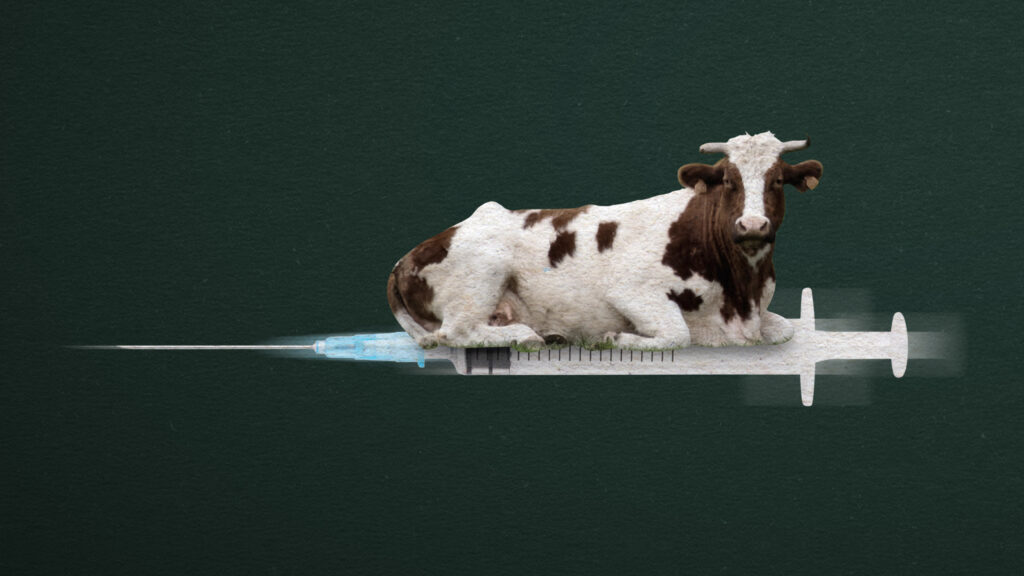
If the H5N1 bird flu virus ever acquires the ability to transmit easily to and among people — keep your fingers crossed that it doesn’t — the world is going to need serious amounts of vaccine. Like, lakes of the stuff.
Some manufacturers have been working with H5N1 viruses for years, producing small batches of doses that have undergone preliminary human testing. Some millions of doses — in the low double digits — have even been stockpiled by the U.S. government.
But deciding when to start producing H5 vaccine at scale, in the quantities needed to vaccinate the world, is no easy feat. It’s a high-cost, high-risk endeavor. Get it right and you save lives. Hesitate, and lives will be lost. But making the call if the vaccine turns out not to be needed is not a cost-free decision either.
There are some obvious questions that come to mind when you start thinking about what might trigger mass production of H5N1 vaccine. Here are a few, and some things to think about to help make sense of a truly complicated situation.
Given the concern about H5N1 in dairy cattle, why not just start making H5N1 vax now, in case we need it?
The global capacity to make flu vaccine is in the range of about 1.2 billion trivalent (three components in one) doses of vaccine a year, according to a market assessment the World Health Organization published in January. Most of the year, that production capacity is in use doing what it was built to do, making seasonal flu vaccine for the Northern and Southern hemisphere flu seasons. In the weeks between those two runs, plant maintenance is typically done.
In a flu pandemic, the output of all those production lines would shift to making pandemic vaccine to protect against the new strain of flu that would likely be triggering large waves of illness worldwide.
Here’s the thing. The production lines can make seasonal flu vaccine. Or they can make pandemic flu vaccine. They cannot make both at the same time. That’s why deciding to make pandemic flu vaccine at scale is not a no-cost decision.
“You can’t just press the button and begin producing pandemic H5 vaccines. You have to stop producing your seasonal vaccine, and all of you out there know how lifesaving that vaccine is,” Mike Ryan, head of the WHO’s health emergencies program, told reporters at a press conference earlier this month. “So, this requires a very careful consideration.”
When decisions like these have to be made, it’s not clear how things are going to play out. A new virus might cause a devastating pandemic. Or, as was the case in the 2009 H1N1 pandemic, it might trigger an event that is so mild that politicians will later question whether an emergency response was needed. (In a recent interview, Tom Frieden, who was director of the Centers for Disease Control and Prevention during the H1N1 pandemic, called it “a pimple of a pandemic.”)
In 2009, the world didn’t really have to make a tough decision about whether to stop seasonal flu vaccine production, said Marie-Paule Kieny, who was WHO’s assistant director-general for health systems and innovation at the time. (Kieny has since retired from the global health agency.) That’s because production of the seasonal vaccine for the 2009-2010 Northern Hemisphere winter was almost completed when it became clear the new virus had triggered a pandemic.
But another time, a decision might have to be taken to abort the seasonal flu vaccine effort to switch to pandemic vaccine — a decision that would be costly for producers. In most cases, manufacturers only get paid for vaccines they deliver, and if they have to junk a run of seasonal flu vaccine because the client decides it wants pandemic, not seasonal flu vaccine, they have to absorb those costs, said Paula Barbosa, associate director for vaccine policy for the International Federation of Pharmaceutical Manufacturers and Associations (IFPMA). Sure, they’d probably end up selling all the pandemic vaccine doses they could make, as quickly as they could make them. But the costs associated with the abandoned run would eat into those profits.
“Individual companies might have specific agreements with certain countries, but overall, what is lost, it’s on the manufacturers,” Barbosa said.
There can be opportunity costs as well. At a point during the Covid-19 pandemic, when global vaccine production was operating at full steam, there was a global shortage of glass for vaccine vials. Everything used in vaccine production — the eggs viruses are grown in for most of the traditional flu vaccine manufacturing, the equipment needed to administer vaccines — would likely be in short supply in a serious pandemic. Using any of this stuff to make or administer seasonal vaccine when pandemic vaccine is needed would be a wasted opportunity.
“You have to be totally conscious that, especially when you get to a global scale, it’s syringes, it’s needles, vials. It’s the capacity to fill and finish the vaccine. We don’t have that at global scale and most of it, like the antigen, or much of it is concentrated in better-off countries. So yeah, there is a huge supply chain and logistics challenge if we have a global pandemic,” said Jesse Goodman, who was director of the Food and Drug Administration’s Center for Biologics Evaluation and Research during the 2009 pandemic. Goodman is now director of the Center on Medical Product Access, Safety and Stewardship at Georgetown University.
Barbosa pointed out another cost of switching into pandemic vaccine production mode. Big manufacturers, like Sanofi and CSL Seqirus, run their flu vaccine production facilities year round, serving clients in both hemispheres. But some smaller companies that make flu vaccine for local markets make it half the year and produce pediatric vaccines the rest of the time. Switching to pandemic flu vaccine production could mean essential childhood vaccines aren’t available for some period of time, Barbosa said.
“We really need a process to altogether take that decision and then for there to be a full understanding of what are the consequences, not only for manufacturers, but for worldwide vaccine production,” she said.
Is there a process? Is it clear how a decision to make H5N1 vaccine will be made?
“Nothing is clear,” said Kieny.
After the 2009 pandemic, the WHO held a series of three meetings with industry, regulators, and national authorities to try to figure out whether a framework for making a switch from seasonal to pandemic production could be devised. Industry very much wanted to know they would be issued marching orders. They still do. “Manufacturers themselves cannot be responsible for this decision,” Barbosa said.
“Right now there is no formal process to tell all manufacturers to switch from seasonal vaccine production to pandemic production. Industry does need a clear signal to do that switch even fully or partially,” she said. “WHO declaring a pandemic is helpful. But it might not be enough. For instance, if it’s a pandemic, and the pandemic virus causes milder disease … there may not be a need to manufacture a pandemic vaccine at all.”
The WHO-led consultations, which were held from 2013 through 2017, did not result in a firm plan for how to do this. It wasn’t clear that anyone wanted to own this decision-making responsibility, Kieny said — “at least until the situation gets really bad.”
Gary Grohmann, who used to be the head of immunobiology for Australia’s Therapeutic Goods Administration — its FDA-equivalent — was involved in those meetings. He suggested individual countries will give manufacturers they purchase from directions, based on the best advice available from their public health agencies, and from the WHO. When it perceives there is a need, the latter will make a recommendation that pandemic flu vaccine production begin, Grohmann said.
“That will be only a recommendation. And it would be up to the individual countries to make the decision and then ask their manufacturers … to make their vaccines and to stop production, possibly, of other vaccines,” he said.
Major manufacturers, though, sell to multiple clients. What if the country in which the plant is housed wants to start pandemic vaccine production, but another important client wants to proceed with seasonal production, in case the pandemic doesn’t take off?
Kieny believes some big national governments may get the ball rolling when they decide it’s time to buy pandemic vaccine. “It depends when the big customers, and especially the U.S., will say, ‘We think that it’s worth putting the money on the table.’ Then everyone will rush and do the same,” she said.
“It’s not a question of a switch. It’s a question of a decision. And it’s a financial decision to invest.”
That could be particularly true in the wake of the Covid pandemic, when messenger RNA vaccines made their global debut, especially if a flu pandemic were to happen in the near term.
A number of the mRNA manufacturers, Pfizer and Moderna among them, have been working on, but have not yet licensed, seasonal flu vaccines. Without a seasonal product line to disrupt, it would be easier for those players to make pandemic vaccine — should they choose to enter the market. But there would need to be the promise of sales.
“For vaccine lines that aren’t used for flu now, the decision isn’t to switch, it’s whether to invest and when to start producing,” Kieny said.
Wenqing Zhang, head of the WHO’s global influenza program, said after its 2017 consultation with stakeholders, the WHO revisited the whole question of how pandemic influenza vaccine production would be triggered, eventually coming up with a document called the Pandemic Influenza Vaccine Response-Operational Framework. The document, finalized in 2022, has not been published, she said, because some items in it touch on issues that are up for negotiation in the ongoing efforts to update the International Health Regulations.
Zhang said the document, which is not available online, acknowledges that manufacturers would need a signal from the WHO that a pandemic may be underway. But the WHO declaration would be about the risk that the virus poses, she said.
Whether the document will be published as is or will require revisions will depend on the outcome of the IHR negotiations. So watch this space.
Flu vaccine manufacturers just took a component out of the seasonal vaccine, the influenza B/Yamagata virus that disappeared during the Covid-19 pandemic. Why not use that space in the seasonal shot to start protecting people against H5N1?
Goodman actually advocates something similar: He’d like to see H5N1 vaccine made in a monovalent shot — in other words, not combined with vaccines targeting seasonal flu viruses — that people could opt to get if they wanted to start protecting themselves against this virus. He proposed it in an article in Clinical Infectious Diseases in 2016. Rather than stockpile vaccine against H5, stockpile immunity in people, he argues.
“Even if this particular threat” — the H5N1 outbreak in cows — “doesn’t turn into a pandemic, I do think it should give further impetus to really thinking about doing that,” he told STAT.
But the idea of bundling H5N1 vaccine into the seasonal flu shot would cause regulatory challenges. The virus is not very immunogenic, meaning it doesn’t trigger a strong immune response in people. Research done nearly 20 years ago showed that in order to achieve what would probably be a protective response, the vaccine would need to be given in two massive doses; later research showed two regular sized doses with an adjuvant, a compound that boosts the immune response a vaccine generates, would likely provide protection.
Most seasonal flu shots do not contain an adjuvant — the sole exception is a vaccine for seniors sold by Seqirus, which contains the company’s MF-59 adjuvant. Adding an adjuvant to the seasonal shots would change the vaccines enough that new licenses might be needed — a big lift for manufacturers. In addition, studies would be needed to make sure that the H5N1 component did not erode the immune response to the other components of the vaccines.
Zhang said that before H5N1 or another potential pandemic vaccine could be used in this way there would need to be more research. There’s no data, she noted, on what happens after repeated vaccination against H5N1. And it’s not clear when would be the best time to give it, because immunity induced by vaccination will wane over time. “All these, I think, are research questions that need to be addressed,” she said.
If vaccinating people is such a tough call to make, why not just vaccinate the cows?
This may turn out to be something that happens, but it’s still very early days.
Some makers of animal vaccines are reportedly working on developing H5N1 vaccines for cows. But there are still a lot of questions that need answering before farmers are likely to embrace this approach, said Meghan Davis, a dairy and mixed animal veterinarian who does “One Health” research in Johns Hopkins University’s department of environmental health and engineering and school of medicine. (One Health is a term that refers to the intersection of human and animal health.)
“I think we do not have enough information right now to address the really pragmatic questions that dairy producers are going to have, if they’re going to spend money for this,” Davis told STAT.
Farmers will want to know who is going to pay for a vaccine that they may be mainly using to lower the risk that H5N1 will spill over from cows to people. Though animal vaccines can be much less expensive than the human equivalents, the price of the serum itself is not the only cost of an immunization program. If a vaccine has to be administered by a veterinarian, that adds to the cost. If it has to be given more than once, the cost goes up. Will all cows need it, or could you target only lactating cattle? How long will the immunity the vaccine induces last? “Without the answers to those questions, you really can’t think about your cost benefit at all,” she said.
But Davis said farmers may see advantages of vaccination. The impact of H5N1 in cows is still coming into view because farmers have been pretty close-mouthed about what they are experiencing when the virus moves into a herd. However, word is starting to emerge that some of the affected cows do not return to pre-infection milk production levels, that when they recover from the infection some experience a “deficit,” Davis said. “Now you’ve got a cow who’s not going to produce as much as she would have produced at that point in her lactation.”
In such cases, farmers may decide to send cows like these to slaughter earlier than otherwise would have been the case, getting fewer years of production out of these animals. If a vaccine prevented infection and protected against a drop in production, that might change the economics of the approach, she said.
Another issue related to vaccination of animals against H5N1 relates to international trade. Though the World Organization for Animal Health — the animal equivalent of the World Health Organization — recommends against it, some countries restrict imports of poultry that have been vaccinated against avian influenza strains, because testing can’t easily differentiate between antibodies that are the result of previous infection or vaccination. Davis said this may be less of an issue for dairy cattle, as milk sales are more local and regional than international, but she noted it might be an issue for cheeses.

